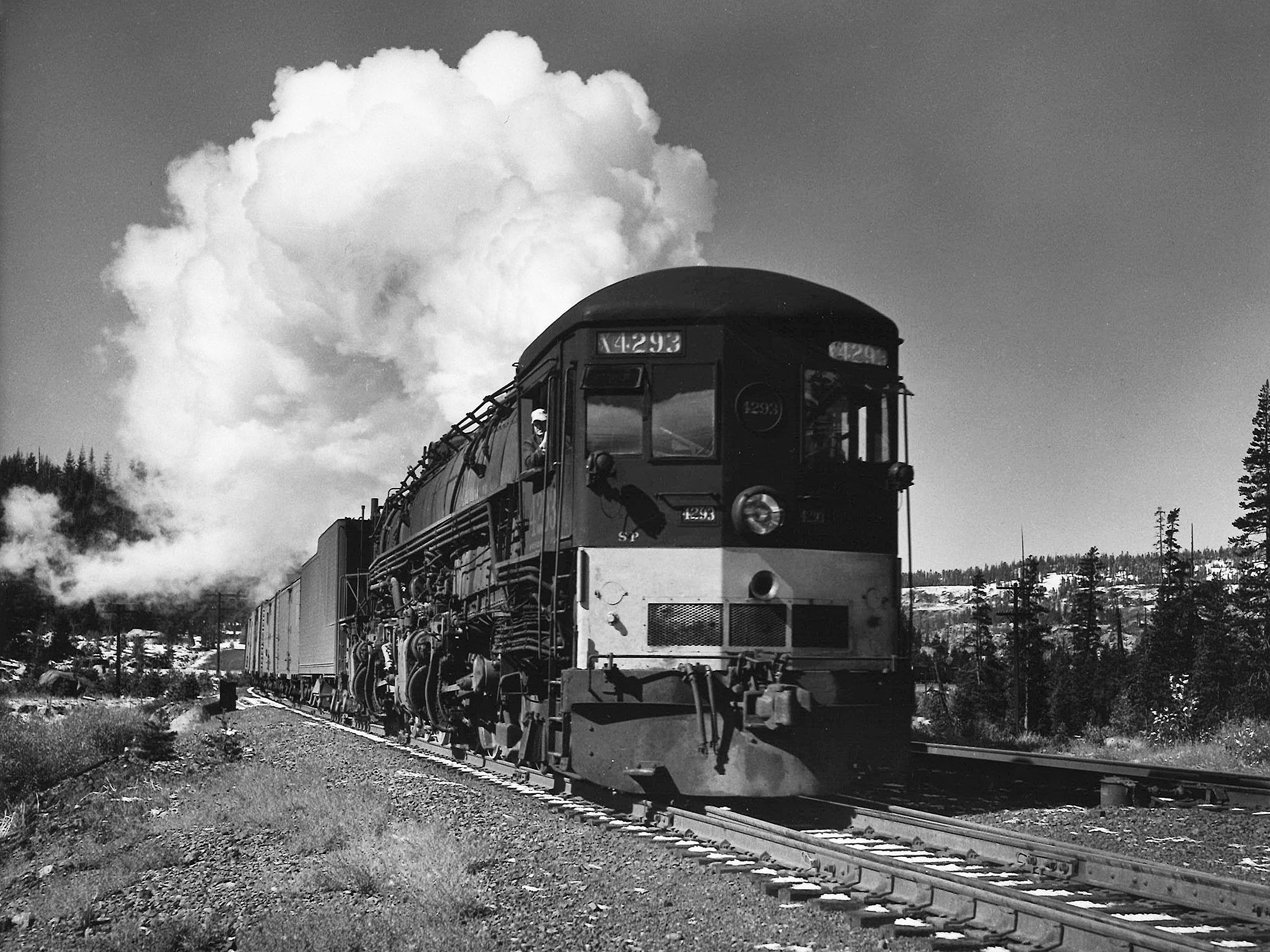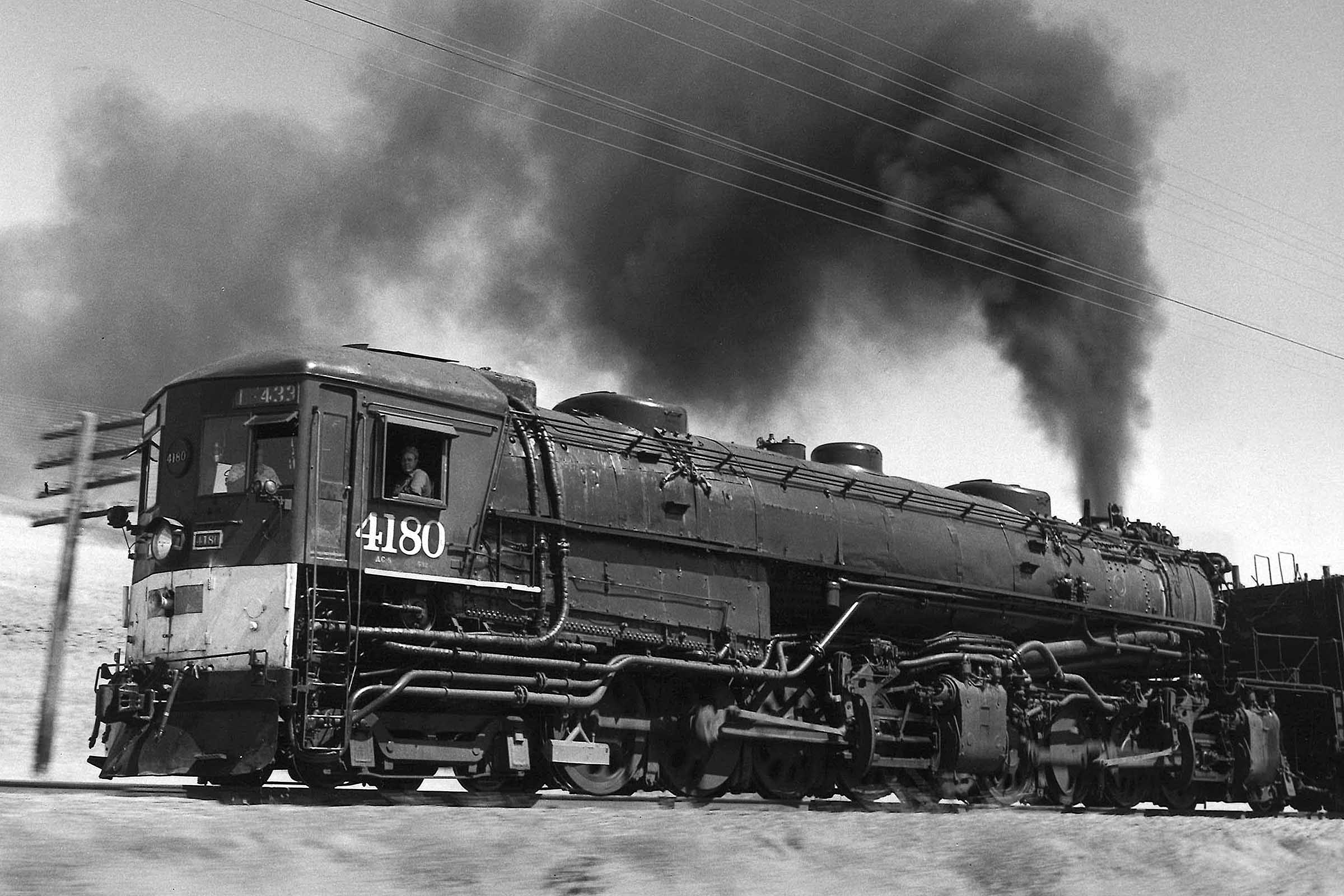In the steam era, perhaps no sight was as unconventional as an encounter with one of the Southern Pacific cab-forwards. These monstrous AC class 4-8-8-2 steam locomotives turned engine design almost literally on its head by flipping the position of the cab and the firebox to the front. As they would in the diesels that would come later, the crew of an AC cab-forward had a commanding “front-row” view of the oncoming right-of-way.
Why the unusual orientation? In a word: geography. Southern Pacific was both cursed and blessed with the legendary crossing of the Sierra Nevada known by most people as Donner Pass, or among railroaders of the era simply as “The Hill.” To get trains through the mountains, SP needed an engine that could haul a train over the 7,000-foot summit, negotiate endless curves, and pull through 40 total miles of snowsheds and as many as 39 tunnels (in 1900) without asphyxiating the crew. The cab-forward design was the answer and found its ultimate expression in the 195 simple-expansion AC engines Baldwin delivered from 1928 through 1944.

The cab-forward approach originally appeared in 1910 on what was called the MC class of 2-8-8-2s, all of which were compound Mallet-type engines. Although these machines were successful at first — especially at keeping the crews in fresh air — by the late 1920s they were falling short of the requirement to move faster freight trains, thanks to increasing competitive pressure from trucks. The answer was to design a completely new engine, featuring the “reverse” 4-8-8-2 wheel arrangement in which the lead truck could support a larger firebox. Notably, these engines were designed as single-expansion simple articulateds, although the nickname “Mallets” continued to stick with SP railroaders.
Baldwin would go on to construct 195 engines in the AC class from 1928 through 1944, numbered in either the 4100 or 2100 class, delivered in 8 separate groups, all of them oil burners equipped with 63½-inch driving wheels. The first 10 in the order weighed 475,000 pounds but most later models came in at a whopping 531,000 pounds, give or take, and could deliver 124,300 pounds of tractive effort. Changes through the following orders of AC engines were not dramatic, mostly improvements in feedwater heating, an increase in boiler pressure from 235 psi to 250 psi and moving the cross-compound air pumps along the side of the boiler to the platform in front of the smokebox.
Although The Hill inspired the original design of the ACs, the latter-day Southern Pacific cab-forwards ended up operating over virtually the entire system, from the New Mexico desert to the Cascade Mountains of Oregon and northern California. Although designed as freight engines, they often served in passenger service, and some of the most famous photographs of the ACs feature them in troop-train service. Of their World War II service, Trains Editor David P. Morgan wrote this: “It is enough to say of the 4100s and the 4200s that without them the railroad would have broken under its immense war load with disastrous effects.”
An interesting debate arose during the era of the cab-forwards: who was mostly responsible for the novel design, Baldwin or SP? Steam scholar Dan Ranger discussed the subject in the August 1968 issue of Trains: “The Southern Pacific men claimed that the design of the cab-ahead Mallets was theirs, but the Baldwin men say it was theirs. I do not say that Baldwin did not help a good deal, but rather, that it did not come up with the original idea, only with subsequent design changes as the lineage of the cab-aheads progressed.”
Despite their successful employment across the SP, the arrival of hundreds of EMD F-unit diesels from 1947 into 1953 doomed the legendary articulateds. The last revenue trip of Southern Pacific cab-forward scame November 29-30, 1956, followed by a “farewell” Nov. 30-Dec. 1, 1957, excursion — appropriately over The Hill — between Roseville, Calif., and Sparks, Nev. Alas, only one of the great AC engines was saved, No. 4294, now immaculately preserved at the California State Railroad Museum in Sacramento.















S.P. also had the AM2 a 4-6-6-2 cab forward everyone thinks of their 4-8-8-2 and not realize they had these engines
My take on authorship of the idea and detailed development of the Cab-Forwards can be settled by their fuel choice. For of course SP like all the western railroads preferred fuel oil for firing their engines once Texas and California crude petroleum supplies became available. I wonder whether Baldwin was ever a mover in the change of fueling of its external combustion engine products from coal to oil. I think not. Of course they responded to customers desires. But I can’t think of an engine (other than a diesel) that they from the first, wanted to fire with oil.
Greatest engine ever!